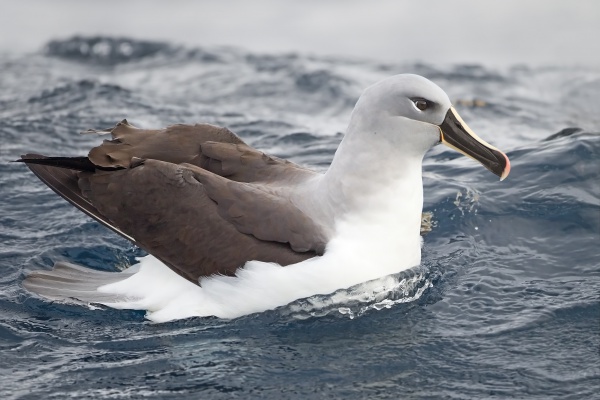Facts About Grey-headed albatross
The grey-headed albatross, also known as the grey-headed mollymawk, is a captivating seabird widely distributed throughout the Southern Ocean. Belonging to the albatross family Diomedeidae, these birds are distinguished by several unique characteristics. They possess nasal passages connected to the upper bill, divided bills, and the ability to produce stomach oil for energy. Additionally, they have a specialized salt gland that enables them to desalinate seawater. The species name "chrysostoma" means "golden mouth" a reference to their strikingly hued bills.
Measuring about 81 cm in length with an impressive wingspan of 2.2 meters, the grey-headed albatross is easily identifiable. It features a dark ashy-grey head, throat, and upper neck, nearly black upper wings, mantle, and tail, alongside a white rump and underparts. Its black bill is highlighted with yellow and pink-orange ridges. These birds nest in colonies on remote islands in the Southern Ocean and forage in the Antarctic Polar Frontal Zone.
In terms of diet, the grey-headed albatross primarily hunts squid and other marine organisms, diving up to 7 meters deep to capture its prey. They lay a single egg in a nest constructed on steep slopes or cliffs, and the chicks fledge after approximately 141 days.
Tragically, the grey-headed albatross is currently listed as endangered. Their population is in decline, largely due to illegal fishing practices that significantly increase bird mortality. Conservation efforts are underway, including research studies and the establishment of protected areas on some of their nesting islands. These initiatives aim to ensure the survival of this remarkable seabird.
